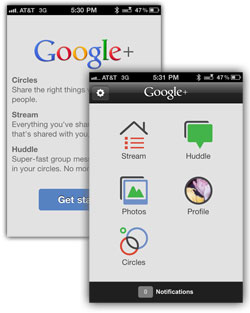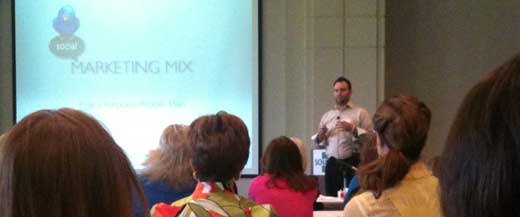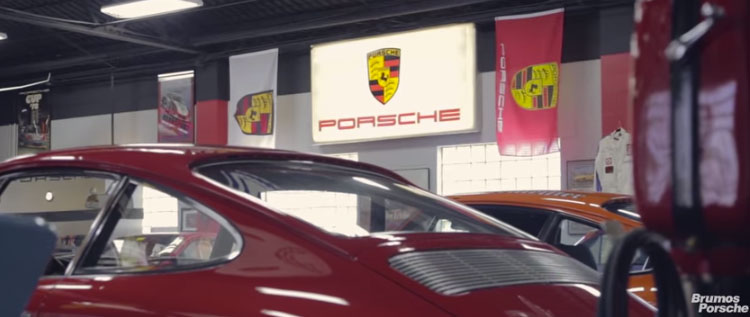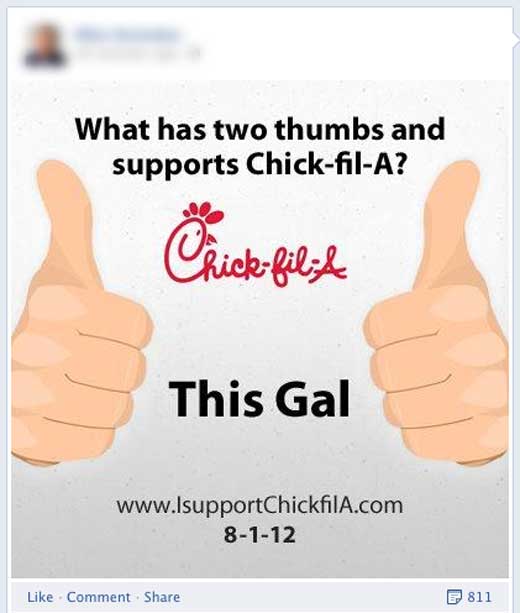In the last episode we explored 360 cameras; in this episode we are microphones for content creation. There are lots of microphone options for content creators and healthcare communicators when considering podcasting, voice overs, or even recording an interview to transcribe for a blog post.
More and more digital agencies are seeing the need for an added value proposition…digital storytellers. These are people that understand visual storytelling, video production, and content development and marketing.
They are selling these services as tactics. Yes…we are finding they are selling services in addition to their web strategies…they can create video, they can create a Facebook page, they can write copy. Pat them on the back and buy ’em a drink.
They have hired a video editor, a videographer, a social media consultant and sell it as an added offering. Yep…but execution is lack luster. They are selling tactics without meat to the strategy.
A friend sent me this video the other day and I was completely intrigued. His note to me…
Reed Smith says:
“I love cars… this is a great example of a really cool car. But they chose to talk about the car though the owners not just simple telling you about the car.”
The link he sent me included the video above and comeback ground information about this story and the Porsche 911 B59.
On thing I have learned over the past 4-5 years working with groups in the social media/digital space: social technologies has provided one heck of a platform for individuals and brands to become overt, expository, and exclamatory in an expedient fashion. Especially when it comes to taking a “stand” or “position” on a topic.
Reed Smith posed this question yesterday on Facebook: “Is it Possible To Be Too Social?”
Now his context for this question was based on frequency…but with the recent barrage of social advocates overloading our walls from politics, healthcare, and even the recent Chick-Fil-A situation; this has me thinking through a different lens.
I am amazed each day what I read on my news feed, on Twitter, the memes that are posted, and how we de-contextualize information to meet our needs. We live in a cut-and-paste, digital recycle world where we take information and reuse to fit our messaging needs.
I often wonder, would the same conversations that happen online happen offline? Would we be more open to conversation offline or would we use the same “hunt and kill” mentality, hiding behind the keyboard, and sharing our inner thoughts like we do online?
There are so many people and individuals that I meet that are nothing like the personalities they portray in the online space. This bi-polar online/offline life we lead leads me to wonder…who am I talking to in person.
Admit it, you have fallen victim to his moment of “rage,” getting caught in the moment wanting to one-up a person online, getting caught in a feud that leads to a Facebook thread three screen shots deep. Before you know it…you wonder who was that person behind that avatar that wrote those rebuttal statements…is that me?
So here is the question, what does it mean to be too social? Is it frequency? Frequency has a lot to do with it…and I do not mean the number of times you communicate a marketing message. I mean the frequency of hours we spend online…developing an online brand that does not coincide with our offline personality.
And we as marketers that manage brand’s appearance online…we end-up having multiple personality disorder. We are typing on our Facebook page, then posting for our brand…hoping that we do not send out that party picture to the wrong social account. Admit it…you have done it before. You just have to know how to delete it REAL FAST.
Are we too “Social”? Well, if it means online…the retail brands hope so, they want your attention and want you to advocate for their cause. I would be willing to bet that Chick-Fil-A is happy with the image above…the 811 comments posted (which leads to shares). But would you say that same thing in person to someone you know that does not agree? With that same expository tone? That same shout with conviction? Would you be proud of that commet after your family members, peers, or even work relationships see that exclamation? Or would wait to get online talk about them later?
What is your ethic and where do you stand online and offline…and are they the same voice? Are we telling the same story? I think we (including myself) need to check ourselves at the door from time to time.
What is our social/digital strategy in a 2.0 world or even a 3.0 world. Is it one of social/digital practicality or is it just trying to begin to pull all these elements together? It is more than just having a social presence, having a website(s), having blogs, etc…how are we using these tools in our overall strategies as we communicate. What do we want to measure and how do we want to starting tracking “success”? I break this concept into two categories:
1) Community Building
2) Marketing
Community Building
Community Building is a huge portion of this social/digital initiative…and will always be when we are using social/digital tools. This includes all our PR efforts, community activities, blogging, give-aways, sharing, promotions, etc.
So let’s think about what we do when we are building our community:
1) We share to grow our followers (build our tribe).
2) We share to build digital awareness (spread our brand)
3) We share to engage conversation (get people to comment, like, retweet, etc.)
We leverage this community from a Community Building perspective when we have something exciting that is happening, crisis communication, event engagement, etc. But if you look above, each one of those three points is trackable.
So let’s look again:
1) We share to grow our followers (build our tribe).2) We share to build digital awareness (spread our brand)3) We share to engage conversation (get people to comment, like, retweet, etc.)
OK…let’s shift gears to Marketing…
Marketing
In the marketing world, this works hand-in-hand with community building. How can we leverage the community that we have built to create downstream revenue opportunities. Many hospitals talk about number of patients, so we have to decide what the “bean counters” consider the most important. How can we create social/digital initiatives that we can track over a period of time to find increase in downstream revenue opportunities.
Here is an example from my friend and colleague Reed Smith in Austin, TX. St. Davids in Austin has an an initiative called the HeartSaver CT…a simple example to consider. The goal is to promote this initiative using social, digital, and traditional means to get individuals to sign-up and have a HeartSaver CT. Basically, you sign up a form inside the website to come in for a $200 evaluation and chat with the doctor.
Here is a link to the page inside the website:
http://www.hearthospitalofaustin.com/our-services/heartsaver-ct
Here is a link to sign-up form:
http://www.hearthospitalofaustin.com/our-services/heartsaver-ct/contact-form
They used specific Facebook, Twitter, YouTube, and traditional marketing efforts to direct people to this page, to fill out the form, and come in for this HeartSaver CT. This is done so they can track the following:
1) How many clicks to the page
2) How many of those clicks came from social outlets (Facebook, Twitter)
3) How many impressions in social outlets
4) How many filled out the form (Collected trackable information like name, address, etc.)
5) How many came in for the HeartSaver CT (immediate revenue opportunity of $200 per person)
6) Track downstream revenue from those individuals that had broader services from this visit (Track over a longer period of time)
Each of those items are trackable. Each of those gives us an idea how our digital efforts worked and if it create immediate and downstream revenue opportunities. From a social/digital perspective…you have to have built an online, social community. So when you share, there are people there to click and hopefully re-share. You are not only measuring the revenue, but you are measuring the value of the online community. You also measuring the value of their reach…so to speak.
So…you all are just as smart (if not smarter) than me and probably are already creating initiatives in our digital/social space that integrates marketing opportunities like this…so we can ultimately measure some success. In my most humble opinion (as we look at all of our social/digital outlets) I think we should ask ourselves the following from each of our outlets social/digital outlets:
1) What is the mission/purpose of this outlet? (social sites and web sites)
2) Who is our audience in this online community or digital outlet? (social sites and web sites)
3) How/what are we going to communicate to build community?
4) How are being a good steward of the larger community? (sharing to make the online community a better place)
3) How/what are we going to promote (initiatives) that we can track downstream revenue opportunities?
We want to build a strong online community. We also want to contribute to this larger community to make it a better experience. But we also want to share opportunities that create revenue as well…or do we?
As I sit in a meeting discussing next years digital/social media strategy…I feel hints of my old days sitting in those morning editorial meetings as a journalist. Every morning, we talked about the stories of the day, relevance to the audience, timelines, how to tease, and how to cross promote.
Large organizations are no longer structuring new media & social media strategies…they are online content creators and providers. In the age of digital media…it is no longer about delivering content, it is sharing content. Big difference. Delivering and sharing are two completely different models and mind sets.

As you read the article…this digital distribution strategy is more than just an editorial calendar, it is a timeline associated to digital scavenger hunts using Twitter; cultivating fans to take part in a virtual world like the movie Hunger Games.
We are moving past exploration…it is no longer about just creating a Facebook page, a Twitter account, a YouTube channel…we are in the age of engaging conversations and learning we must let the audiences guide us. It is no longer about using social and digital outlets to just post content and hope the audiences will come…more about how can we cultivate conversations.
Now, I know I am sharing what we already know…but do we really? We are still creating post card websites, YouTube channels full of content that no one will watch, Twitter feeds with little interaction. Large hospitals all over have numerous pages for no other reason than pleasing another department and hoping they are updating the page in three months. I have them in my newsfeed, numerous hospitals and none of them make me want to click…AT ALL. Or is that the point?
My colleague Reed Smith, who helps manage social and digital efforts for numerous healthcare organizations in Texas, shared some insight from his conversations with many of his counter parts from other hospitals during the social conference at the May Clinic. He explained that many large hospitals are dealing with the same situation…learning how to deal with digital and social efforts in a 2.0/3.0 world. Lots of departments, services lines, physician practices want to take part in the social space yet have a hard time living up the true burden, how to truly engage their audiences. Lots of spaces, lots of websites, lots of social accounts…leading to a house of brands.
Vanderbilt University Medical Center shares their social/digital tool kit online…funneling people inside the hospital to this site who are interested in having a social presence. If you want to join in the conversation…you must fill out the form. Cool tool kit…but it is more than a checklist…it is a culture.
Dr. Wendy Sue Swanson is a pioneer in this space, leading us down a path of understanding how to integrate the social space into the daily routine of a physician.
As stated in an opinion article from the LATimes:
“The problem, Swanson said at the South by Southwest conference Sunday, is that insurers won’t pay for the videos she creates to educate patients or the blog posts she writes about important new developments in pediatric care. No matter that these steps would lead to healthier patients who place fewer demands on the healthcare system.
She does them anyway, but the idea of communicating online with patients is anathema to her fellow doctors. “There’s an overwhelming climate of fear” among physicians, she said, about the liability they may incur or the privacy violations they might commit if they respond to emails or write blog posts about medicine.”
We are our own news organizations. We are taking control of our content…but are we building communities? We can find metrics for success by building fan bases, creating social strategies to sell services? But are we really measuring success or just graphing some numbers to make ourselves feel better? Better that we are empowering our organizations as we take control of our content?
I asked my wife today, why would you want to follow a healthcare organizations fan page? What would you want to get from that experience? She wants information that she can use, invitations to events to educate her about our child’s care. Relevant services that make sense to her daily life. No where did she say she wanted to see awards of recognition as a top hospital, best “this” and best “that”…she wants information that make sense to her.
I think I have to agree with Dr. V’s thinking:
“I can’t help but wonder if we’re in the midst of a social health correction – a readjustment of expectations and beliefs about the near-term potential of social media to revolutionize health.”
And I love this as he continues…
“We created filter bubbles that allowed us to hear the messages of those telling us precisely what we wanted to hear. We saw the rise, plateau, and ultimate dissolution of social media consultants who would save us by telling us how to correctly use Twitter.”
It is time to move on and actually start engaging our tribe before we loose what we supposedly built over the last few years. It is time to consolidate, focus, and have a conversation with those who are our brand ambassadors. These social/digital outlets cannot save us..especially when all we do is use those channels/outlets as a one directional conversation and push our stuff. If we want to be a newsroom, content providers…it better be relevant or it will diminish faster than many traditional news outlets.
On Monday, I had a great opportunity to try out a Google Plus “Hangout” with Reed Smith and Ed Bennett. Our goal was to try it for the first time and maybe talk a bit about Google Plus in healthcare. Great conversation and great time to sit back and learn a but from smart healthcare, digital leaders. The video is above from our Hangout. Also, Reed’s friend Bryan Person joined us…great to meet a new person on Plus.
Here is the biggest take away, three things that have me thinking about Google Plus and healthcare:
1) Google Plus is so new, we have no idea how it is going to shape or integrate into our social structure. People are still learning how to use Google’s technology and the user base is still in it’s infancy. Reed Smith brought up a good point, we do not know if this iteration is the 1.0 or even 0.5 version. So many changes are coming, more users will be joining…so Ed Bennett thinks it will be a few months to really see the major impacts in the social space.
2) Integrating Google Plus into a large healthcare/hospital system. Ed Bennett shared some knowledge…he is creating “Circles” based on service lines and departments with the University of Maryland Medical Center (UMMC) Google Plus account. As people are adding the hospital to their circles, Ed is sending them a personal note asking what type of information that would like to receive on Google Plus from the UMMC. Based on their response, Ed is putting that person into a specific Circle based on the relevant service line or department. This allows the person to receive the information they are seeking. Also, if the person asks about an area of the hospital that does not have a Circle, then you can decide to create a Circle based on that feedback.
3) We are still not sure what to expect from a business class account with Google Plus. We do know that the business accounts are right around the corner, so we are sitting back waiting to see how/if to convert our hospital business accounts when Google Plus releases this business option. We know it is right around the corner, especially given this Mashable Story about verified and business account. For this article, CLICK HERE.

If you want to connect with me on Google Plus, CLICK HERE for my profile.
To begin…my friend Reed Smith does a great job of explaining the steps to get your organization going with Foursquare and Gowalla. Here is his step-by-step process for Foursquare (CLICK HERE) and for Gowalla (CLICK HERE).
Here are a few things we have found when setting up Foursquare and Gowalla at Greenville Hospital System (GHS) in Greenville, SC.
First of all, GHS is a large hospital system with multiple campuses serving the Upstate of South Carolina. When beginning to tackle this project, we noticed immediately it was necessary to engage using this social outlet. Why? Well, we found close to five different spots created for the main hospital each totaling close to 2000 check-ins. Each location had in-complete information about the hospital. This fragmented information was not best serving the hospital and the individuals using these outlets. None of the locations had a correct phone number, web address, and physical address. So we knew immediately we had to begin taking control of these check-in points, consolidate, and update with correct information.
The next thing we noticed is that a hospital might have multiple places for a person to check-in, including the hospital main entrance, emergency department, labor & delivery, rehabilitation services, and even nationally branded restaurants inside (Starbucks, Chic-Fil-A, etc.). While accessing these possible check-in points, we began to consolidate places for people to check-in. We wanted to only have destination points that supported the interests of GHS’s customers as they align with certain service lines. So we began with the main entrance, emergency room, and labor & delivery at the main hospital. This is still a working progress.
When consolidating locations at one campus, proximity of geographical check-in points was key. Foursquare and Gowalla only work in a two dimensional space…meaning if the labor & delivery was one floor above the main entrance…it might not make sense for both check-in points. We want the check-in process to be fun and social, not become a hindrance when trying to decide which point to select.
The key to beginning is to follow what Reed Smith describes in his posts, but it is important to create business Foursquare and Gowalla account separate from your personal account. When claiming these locations for your business, you want it tied to a single account that you can manage. You will be able to edit and manage each location from this user account. We also decided to start with Foursquare and Gowalla first, then we are slowly moving to Google Places, Facebook, and Yelp.
Patience is key when setting up and managing these location based outlets. You have to spend time working with Foursquare and Gowalla to remove and merge duplicates, keep information updated, and engage with the community. Each location has the possibility for individuals to not only check-in but also comment about their experience. This is a great way to engage in healthy conversations.

Reed Smith finished with this parting question,” Who Owns Social Media?” My opinion, the masses. The people that are using these media’s to socialize, share information, connecting with others are the ones that own social media. Organizations are just one of the many people in this vast paradigm interacting with other colleagues, constituency bases just like my mother sharing pictures of her Vegas trip. She has an audience, she engages with her audience, shares information, receives a level of response, and continues to engage in conversations. If people were not responding, commenting, engaging, sharing, and generating conversation…then Facebook would not be the Number One website jumping over Google (Via Ed Bennett)
We as marketers, hospitals, organizations should understand and respect the paradigm, or we will find one more way to shape a vastly growing medium into a form of one-way conversation…one more time! So, it comes back to audience…knowing our audience and finding ways to join the convesation instead of creating one more marketing stream, hoping that some mom from the age 25-34 is going to by into our poorly created message as we cram it into a medium with a sledge hammer. We have big sledge hammers!
Social Media is no longer an after thought when it comes to hospitals marketing strategies. VP’s and Marketing Directors are quickly trying to evaluate staff resources and figure out how to staff the shift. The shift is not just Social Media, but New Media and Rich Media. We are asking questions to those large organizations how they are staffing a marketing/pr and comparing it the numbers of the web/media staff. Some do not have a web/media staff, outsourcing to a vendor in the hopes it will create a band aid until the next fiscal conversation.
Ed Bennett told the crowd of 125 at SCHA’s Conference Center that his staff at the University of Maryland Medical Center is 8 web/new media professionals servicing all social media and web outlets compared to the marketing/pr staff has 8 members as well. They are making the shift and taking control of creation and distribution of the their message. Amen brother…preach it to us, we will follow. Trust me, every decision maker in that room was jotting down that number and thinking about integrating those stats into their strategic capital requests! Bottom-line, that is where the ROI discussion should be located.
Social Media efforts are now being integrated into every aspect of a hospital’s and physician’s marketing efforts. They are learning that Social Media has another ROI point of interest, it is generating direct hits to their web portals, directing audiences to the message, reducing bounce rates, and creating strategic linkage systems that bolster rankings in the search engines. It is a search engine war as hospitals in the same geographic areas are competing for the search engine space. Not only with Google but with YouTube…why, because YouTube is the Number 2 search engine right now, today! (Via Ed Bennett) Hospitals are creating rich media that gives audiences palatable information that helps potential clients make decisions from service lines to which ER (ED) to choose.
Social Media efforts are being integrated daily into all campaigns. It is no longer the game of just creating a billboard and “brochure” and then create a totally different message for web/social media/new media outlets. Now, these efforts are being combined, where there is a conversation of consistency in design across the whole board. You no longer see the Facebook and Twitter logo as an after thought at the bottom of a print piece, it is taking over as a major position in the design and including the exact URL to find this social media outlet. Oh yeah…we are in a mode of securing our domains before someone takes over our message. Look at what happened to BP, someone created a Twitter account (@BPGlobalPR) to post off color messages about the oil spill in the gulf. Is it really a pr nightmare?
And…OH…AND…TWITTER AND FACEBOOK ARE NOT THE ONLY SOCIAL MEDIA’s! Conversations are being created on Flickr and YouTube. People like to share pictures and video. They like to be creative and find others that share their vision. So campaigns are being created so that audiences can take part in the media creation. Organizations are creating campaigns allowing audience to submit videos and pictures that lead to idea generation and community building. We all have a way to express ourselves so why not capitalize on user generated media. Plus, marketing departments know they are biased based on strategic messaging (that waters down the social conversation), it makes more sense to let the audience lead the way. Once again, the masses own Social Media.
Policies and Procedures…oh yeah, that too. It is time to dust off that HR generated web policy that we have employees signed, the one that was created in the 1980’s. It is time to realize that we cannot close the pipes much longer inside hospitals and organizations. There is this new little nifty thing called a mobile device. Yes, those phones that are now media generators and media distributors. We can now walk around hospitals until we find that service bar on the phone, take a picture, and upload it to Facebook. Do not mind the fact that I cannot log onto Facebook from my company issued computer…we will show them. Do not mind that the hospital’s Wifi is in and out, we can get close to a window, get service, and send a picture of Uncle Harry that just got out of surgery and is ok now! Oh, there is this new thing called an iPad and a Netbook that does not need Wifi anymore and it has a the ability to do more than the mobile phone. So we need to generate a policy that is more than just a social media policy, it is Media Communication Policy for not only employees but patients as well. Signs need to be put up around hospitals to remind of best practices when taking pictures and sharing information.
IT IS A SOCIAL MEDIA REVOLUTION!
So where are we now and where are we going? Heck if I know, but I know this…location based technologies like FourSquare and Gowalla are hear and gaining traction. They are the real Social Media ROI generators, when people check into a location, it provides an exact location for all the masses to see. We now can start targeting information and strategies based on where the masses (or audiences) are checking in. We should, because Starbucks is doing it, providing incentives for those who check in the most…DISCOUNTS! Hmm, this could work well for hospitals that have wellness programs integrated with work-out facilities.
I tell you what, that Reed Smith and Ed Bennett are smart peeps…and Micheal Shetterly of Ogletree Deakins Law Firm got me thinking about this Social Media Revolution. It is about audience, purpose, delivery, engagement, and right to privacy. Yes, Right to Privacy…and what is your expectation to privacy. These new policies and procedures need to include how, when, and where information is created and distributed, especially if the company is footing the bill for that Balckberry, iPhone, or Android you are carrying. If they pay, they might have a right to access the information you generate on that device.
Social Media is here to stay and we cannot avoid it…AT ALL. So it is time to find ways to staff it, generate best practices, follow the audiences that own it, and be prepared for it’s evolution. This Social Media Revolution is going to evolve into the next media revolution that has the acceleration of an “E” ratio…forward and fast!
BTW – The Adams Group had two great recaps of Social Media Revolution: Part One & Part Two




